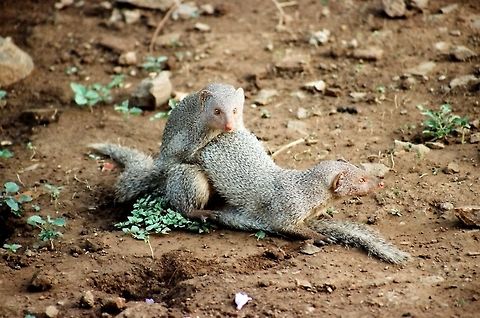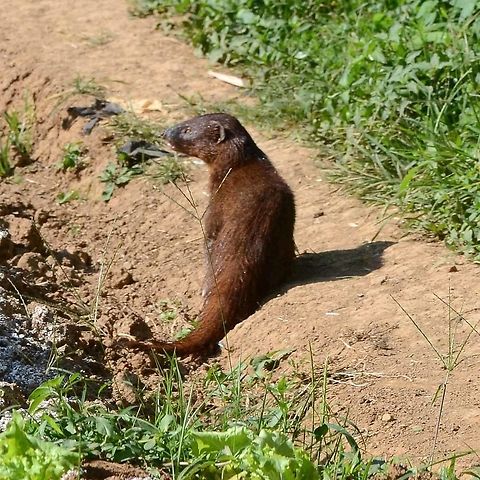
Appearance
This species of mongoose is sympatric with ''Herpestes edwardsii'' in much of its native range and can be readily distinguished from the latter species by its much smaller size.The body is slender and the head is elongated with a pointed snout. The lengths of the head and body is 509-671mm. The ears are short. They have five toed feet with long claws. The sexes differ in size with males having a wider head and bigger size.
They use about 12 different vocalizations.

Naming
The mongoose introduction did not have the desired effect of rat control, either in Hawai'i or St. Croix. The mongoose hunted birds and bird eggs, threatening many local island species. The mongooses bred prolifically with males becoming sexually mature at 4 months and females producing litters of 2–5 pups a year.Mongooses can carry leptospirosis.
Distribution
This species occurs naturally throughout most of southern mainland Asia, from Iraq to China, as well as on the island of Java, at altitudes up to 2200 m. It has also been introduced to dozens of islands in the Pacific and Caribbean , as well as a few in the Indian Ocean and Mediterranean, as well as to mainland Venezuela. It is capable of living among fairly dense human populations.Mongooses live in scrublands and dry forest. On Pacific Islands they live in rainforests as well.
Behavior
Mongooses are mostly solitary although males will sometimes form social groups and share burrows. Pregnancy duration is up to 49 days. A litter can consist of 2–5 young.Habitat
This species occurs naturally throughout most of southern mainland Asia, from Iraq to China, as well as on the island of Java, at altitudes up to 2200 m. It has also been introduced to dozens of islands in the Pacific and Caribbean , as well as a few in the Indian Ocean and Mediterranean, as well as to mainland Venezuela. It is capable of living among fairly dense human populations.Mongooses live in scrublands and dry forest. On Pacific Islands they live in rainforests as well.
Reproduction
Mongooses are mostly solitary although males will sometimes form social groups and share burrows. Pregnancy duration is up to 49 days. A litter can consist of 2–5 young.Food
These mongooses mostly eat insects but are opportunistic feeders and will eat crabs, frogs, spiders, scorpions, snakes, and birds and bird eggs.References:
Some text fragments are auto parsed from Wikipedia.